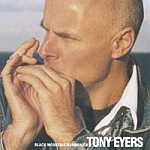 One of the best instructional websites I've found is Harmonica Academy. The lessons are separated into different "years". Freshman, Sophomore, Junior, and Senior. Each year consists of ten detailed harmonica lessons which cover basic playing. Each year also has ten blues lessons.
One of the best instructional websites I've found is Harmonica Academy. The lessons are separated into different "years". Freshman, Sophomore, Junior, and Senior. Each year consists of ten detailed harmonica lessons which cover basic playing. Each year also has ten blues lessons. 1. What is your background as a harmonica player?
I went to College in the
2. I listened to your CD. It's all Irish folk music. Your harmonica playing through it is very much like a fiddle. How did you adapt your playing to that style?
Actually the CD is more bluegrass. I hung around bluegrass players in the
3. I understand you became a big harmonica instructor in
I was working for the
4. How did you decide to create HarmonicaAcademy.Com?
HarmonicaAcademy.com came from the Chinese site, the lessons are essentially the same. I make my living writing educational material in the IT area, so creating Internet based harmonica instruction has been a logical step.
5. How did you come up with the lesson format?
I started by looking at existing harmonica teaching material. There is some great stuff these days, but I found two common problems which I tried to address.
1) Audio samples. You should be able to play the bit you are learning over and over. And it should be right next to the tab. Most instruction books have CDs, where you have to jump to track 46 then start, pause etc. The Internet allows online audio players which avoid this hassle.
Also I wanted to avoid endless tab. Many books have a few pages of instruction, then tab for the remainder. My eyes blur over after a page or two of tab, I suspect that others feel the same.
2) Many instruction courses lack a clear structure. You get the book, it is too easy, too hard etc. In particular, intermediate players often have trouble finding instruction books which suit their level. Creating a structured learning program is not easy. I drew on my skills as a professional educator when designing
6. On the site, you separate harmonica lessons, from blues-harmonica lessons. What is your main reason for doing that?
Most harmonica courses are all blues... Nothing wrong with that, unless you want to play other styles (traditional tunes, Hip Hop etc). For this reason I divided the
7. Do have many students through the site?
The site is becoming popular.
8. What kind of feedback have you gotten?
Pretty much all good so far. I get suggestions on improving things, which I try to incorporate. Early on someone suggested a "Click here for the next lesson" link at the end of each lesson. An obvious feature which I had overlooked, but then added.
9. Anything coming up?
I've been writing a series of articles on things I do as a player. I'm also writing about common traps for beginners, and how to avoid them. Things like the two hole draw note, why you start with a C harmonica etc. I struggled with these things when I started, and didn't have the Internet to help me out. I'd like to make it easier for emerging players if I can.
10. Any last words to members of HOOT?
Absolutely.






great harmonica player
ReplyDeleteThis was interesting reading. Good info and nice history on Tony and the site.
ReplyDeleteThanks for posting this interview. i'm just beginning to learn about Tony's instructional efforts [which are most impressive, by the way], and your interview provides helpful insights.
ReplyDelete